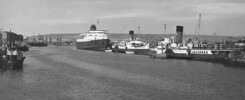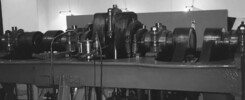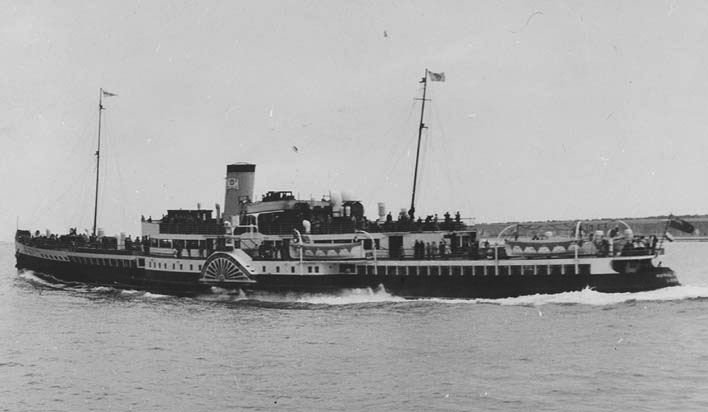
Built in 1932 by Cammell Laird of Birkenhead for the General Steam Navigation Company service from London to Margate and Ramsgate, the Royal Eagle was the zenith of UK excursion paddle steamers. At 1,539 gross tons she was almost twice the size of other large excursion steamers built in the same era like the Whippingham (825 tons), Jeanie Deans (839 tons) and the post Second World War Bristol Queen (848 tons). And she knocked them all into cocked hats with her unsurpassed and luxuriously appointed undercover accommodation, bars and saloons. Although initially billed as “London’s New Pleasure Steamer” it was not long before she acquired the tag: “London’s Luxury Liner”.
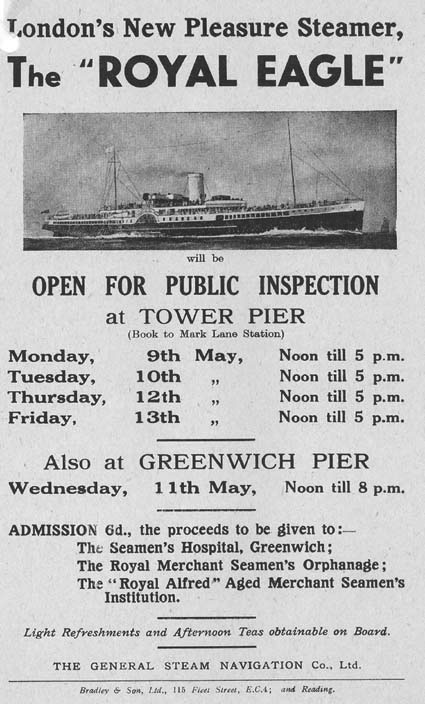
Royal Eagle was opened to the public and press for the first time at Tower Pier and Greenwich in May 1932.
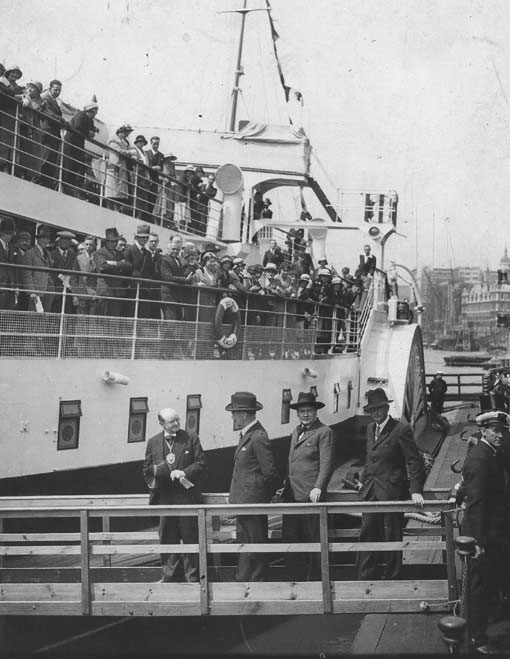
Let’s join the guests and go aboard this giant paddle steamer to have a look round.
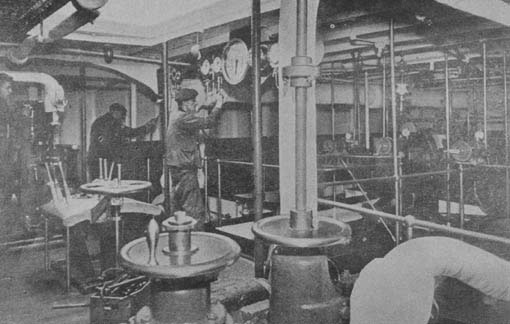
The triple expansion engine with its controls on the left and the steering engine in the foreground. You will see another view of this engine later.
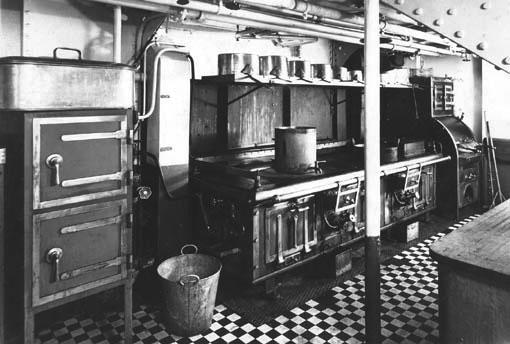
The magnificent oil-fired galley range. You could get some great dinners out of that.
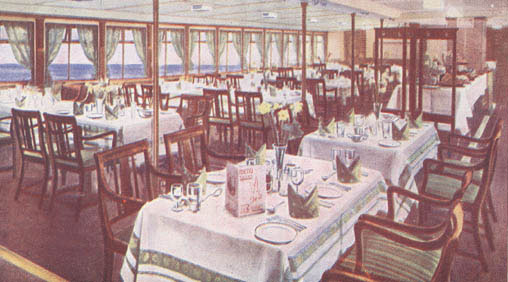
With an overall capacity of around 1,900 passengers and crew of up to 100, including 70 catering staff, 310 could be seated in the restaurant in one sitting.
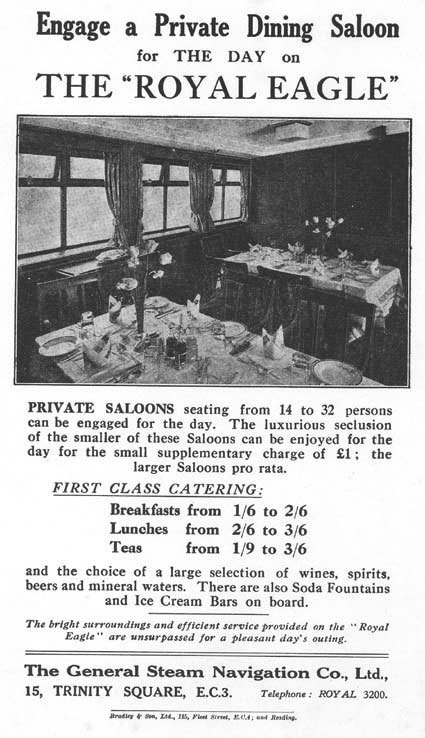
Or if you didn’t feel like mingling with the masses there was the opportunity to book one of the Private Saloons for your own exclusive use.
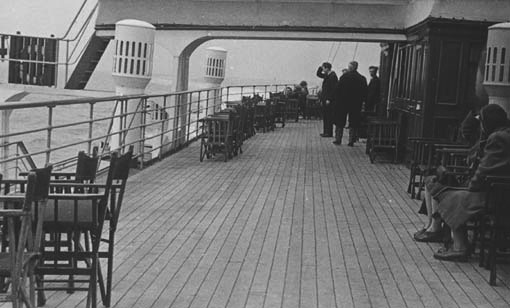
This picture taken on the upper promenade deck gives some indication of the sheer size and scale of this ship. Remember this is not the promenade deck but the “smaller” one above it.
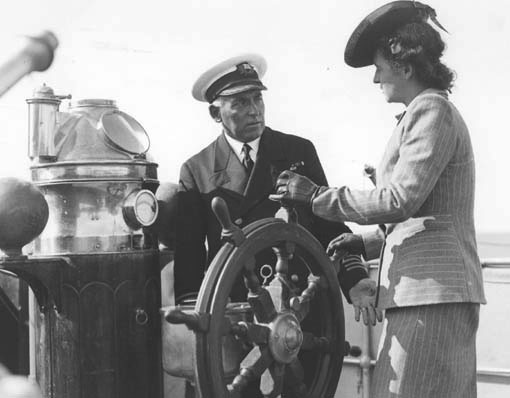
Although the ship itself was huge, her wheel was quite small.
Any suggestions as to what Capt Traynier was saying to his helmswoman in this picture?
The lady certainly had a fine hat although it does not look entirely practical for use on the exposed bridge of the Royal Eagle particularly in an easterly blow. However its general shape and flat top suggest that, when removed, it could have served a secondary role as a tray for fetching tea and biscuits to the bridge.
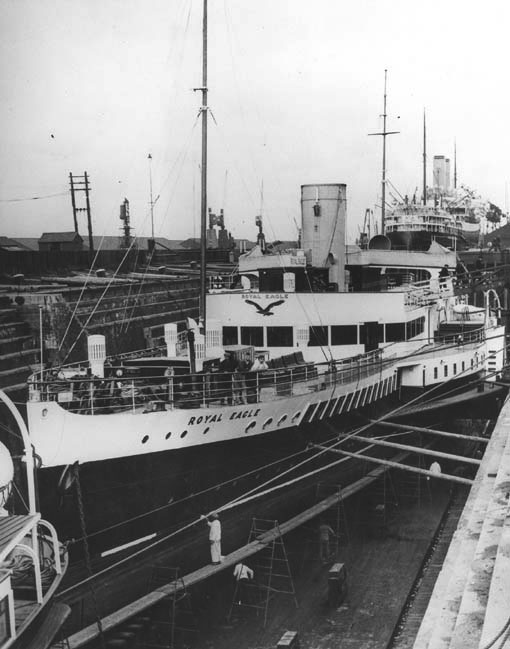
Although a Thames paddler, Royal Eagle, did go round to the south coast from time to time for special events. Here she is in dry-dock at Tilbury getting smartened up for a trip to Southampton to see the maiden voyage of the new Queen Mary in May 1936.
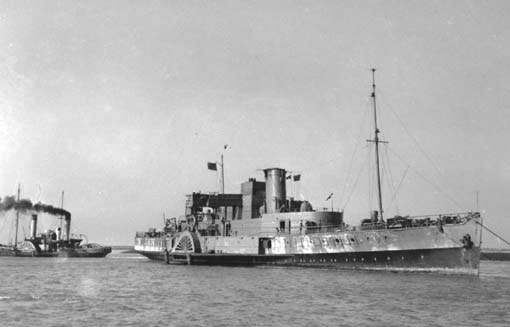
During the Second World War she became an “Auxiliary Anti-Aircraft (Coastal) Vessel”. Here she is in company with what I believe is one of the Dromedary Class Admiralty paddle tugs. There were nine of these serving Naval Dockyards in Malta, Gibraltar, Devonport and Portsmouth but only one, the Advice, was based at Sheerness by the Second World War so I think that this must be the Advice unless anyone out there has a better idea.
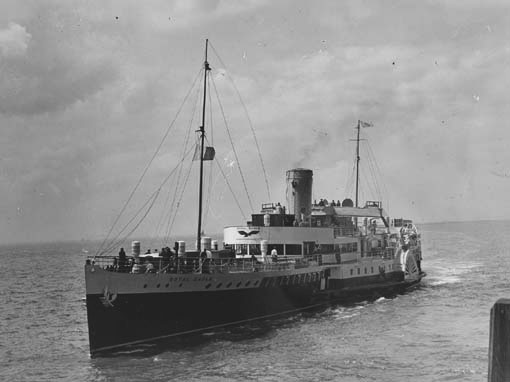
This is an interesting picture taken on Royal Eagle’s first trial run after the war from London to Southend on June 8th 1946. Note that she is flying code flag H which means that she has a pilot aboard. All the excursion steamer masters had their own pilotage certificates but here, right at the start of the season and after the war when pilotage certificates may have lapsed, her master is having to carry a pilot before he gets in enough trips for his own pilotage certificate to be renewed.
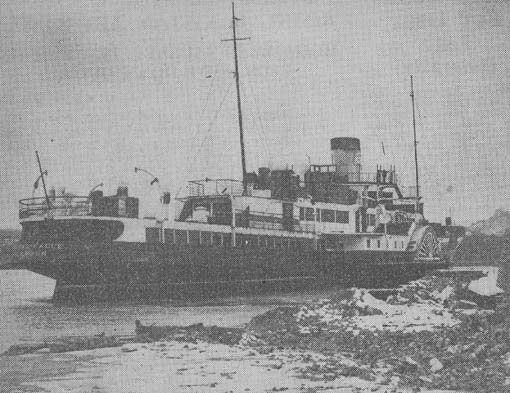
Sadly the Royal Eagle’s post war career was short. She was displaced from her habitual route in 1950 and, after a short season running to Clacton, was withdrawn and laid up in Whitewall Creek on the Medway just opposite the Historic Dockyard Chatham.
When the time came to move her to the scrapyard, she was reluctant to go as is decribed by “The Recorder” on January 12th 1954:
After two unsuccessful attempts to get the Thames paddle steamer “Royal Eagle” off the mud near Upnor (Kent) where she was laid up in 1950, the vessel was refloated recently on an exceptionally high tide and will be taken to Grays (Essex) for breaking up. Thus ends the career of a “grand old lady” which, although never designed for cross Channel work, brought back several thousand troops from Dunkirk in 1940.
It is understandable that the press should have called the Royal Eagle “a grand old lady”. She certainly was grand and the accumulated rust and decay from her lay-up must have made her look, well, a bit old. But, as we have seen, old she was not. Built in 1932, she was still a young lady of just 18 when withdrawn and only 22 when scrapped in 1954, no age at all, particularly for a paddle steamer.
And of this short life, just thirteen summers had been spent in the role for which she was built making London’s merry day trippers even merrier in an ambient haze of food and most particularly drink as she sped down the Thames to Margate, Ramsgate and back.
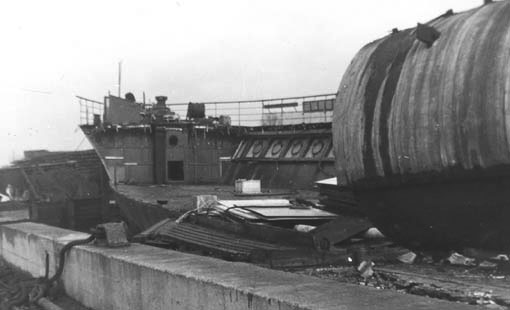
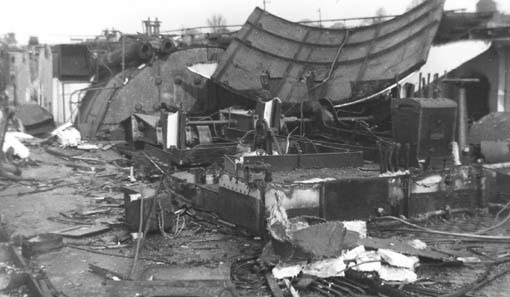
These last two pictures from Alan Peake’s collection are almost unbearable to look at. The merry trippers have gone from the decks. The happy laughter has been silenced. And the lovely ship is fast disappearing under the smash of the breaker’s hammers.
In the first we are on the shore alongside the boiler looking forward. And in the second we are on the main deck just aft of the engine room looking forward towards the boiler where so many people once stood gazing mesmerised by the connecting rods charging round. The engine controls (seen earlier) are still in place on the right and a bit of the top of one of the paddle boxes is strewn across the main shaft.
Oh dear. What a sight. And what an end for such a lovely and distinguished young lady at such a young age.
Brig Rooke wrote:
I was delighted to see your February 2011 Pictures of the Month of the paddle steamer Royal Eagle.
I went on a day trip from London to Margate and back in 1946 or 1947, when I was 10 or 11 years old. My most vivid memory is of watching the huge pistons working and the paddle wheels turning round. At the time my hair was in plaits tied with white ribbons, and the purser (or some other official) stamped the ribbons with the name Royal Eagle. I was very proud of those ribbons, and kept them for many years.
Thank you for bringing back fond memories.
Regards
Brig Rooke (Ms)
Kingswear Castle returned to service in 2023 after the first part of a major rebuild which is designed to set her up for the next 25 years running on the River Dart. The Paddle Steamer Kingswear Castle Trust is now fund raising for the second phase of the rebuild. You can read more about the rebuilds and how you can help if you can here.
John Megoran

